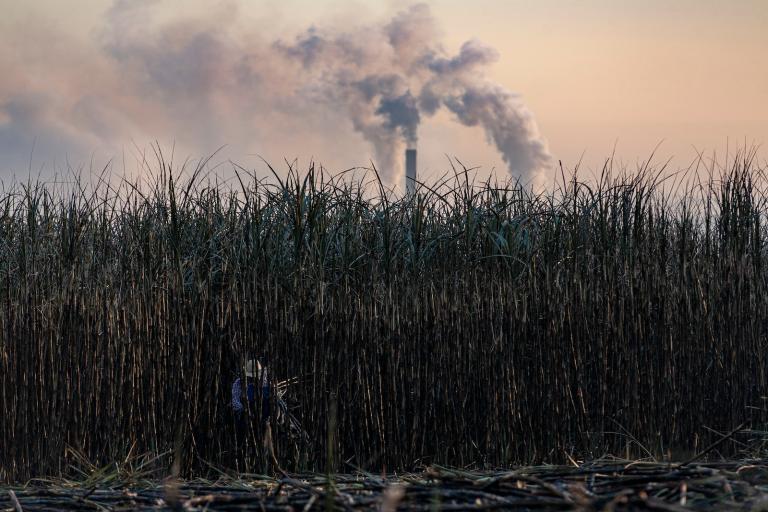 Start counting, pal.Photo: Travis K. WittRoughly 10 years ago, the long history of alternative agriculture entered a new phase. Sometime between the founding of Slow Food in 1986 and the publication of The Omnivore’s Dilemma in 2006, what might be called the “local food movement” took shape. Despite the fixation on locality, the movement’s goals have never been either singular or static. It isn’t just the fresh salad or local butternut squash soup or wild-caught salmon or free-range chicken that proponents are after. Rather, the emphasis is on the complex means to make those things, the human activity of working in nature to provide food.
Start counting, pal.Photo: Travis K. WittRoughly 10 years ago, the long history of alternative agriculture entered a new phase. Sometime between the founding of Slow Food in 1986 and the publication of The Omnivore’s Dilemma in 2006, what might be called the “local food movement” took shape. Despite the fixation on locality, the movement’s goals have never been either singular or static. It isn’t just the fresh salad or local butternut squash soup or wild-caught salmon or free-range chicken that proponents are after. Rather, the emphasis is on the complex means to make those things, the human activity of working in nature to provide food.
A new sub-genre of local-food writing has recently emerged, however, that reduces this multidimensional issue to a singular variable. The “locavore contrarian” can be identified by a penchant for isolating one piece of ecologically complex food systems — energy, say, or carbs, or consumer convenience — calling it into question, producing numeric evidence, and then claiming to have debunked the entire movement. Certainly I can’t be surprised by this line of reasoning prevailing from the business-wing of conservative commentators, but why is it that even self-professed sustainable food advocates prefer not the landscape but the Excel spreadsheet as their site of analysis? The earnest single-variable isolators replace environmentalism with narrow accounting.
Debates around energy and, more specifically, “food miles,” provide the leading edge for this school of counter-critique. Wait, they ask, plucking fresh vegetables from their gardens: is local food really better? Is lamb shipped from halfway around the world truly such a problem? Are fewer field-to-fork “food miles” in fact preferable when the entire lifecycle is taken into account? As carbon accountants, the contrarians note that the efficiency advantages of industrial scales could countermand fuel benefits of buying local. Perhaps. But regionally configured food systems are about more than energy.
A much-discussed NYT op-ed last year by blogger Stephen Budiansky was only the most recent to contribute to this insider contrarian sub-genre. In the purported corrective, Budiansky rightly lamented the fossil fuel burned in trips to the farmer’s market and the electricity used to stock his refrigerator. His interest was to ask consumers to recognize the full lifecycle of food production. Yet he held the fossil fuels alone, leaving unquestioned the infrastructure that requires that car and appliance use — the infrastructure locavores are seeking to reconfigure to abate those fuel demands — and accepting as given the labor, policy, and economic conditions that allow for this circumstance. His chosen rhetorical framework put taste, freshness, and community outside the account. He noted them by way of set-up, only to cast them aside as peripheral, irrelevant factors.
It’s not a new gambit, and it’s not limited to the editorial page. In a 2008 article published in the journal Environmental Science and Technology, researchers Chris Weber and H. Scott Matthews similarly examined the carbon footprint-food miles connection. There’s would seem to be a necessary effort, given the prevalence of pop-food debates often devoid of empirical evidence (a point Budiansky sought to make). Yet after pages of discussion before a conclusion that fewer food miles are not necessarily better for energy use, only in the final paragraph did the authors begrudgingly acknowledge that their “analysis only examined … one aspect related to food choice” — energy — even though that choice is also “based on a variety of factors, including taste, safety, health/nutrition concerns, affordability, availability, and environmental concerns.”
In other contrarian commentaries — in the Boston Globe, The Guardian, The New Yorker, Salon, Slate, and The New York Times, for starters, authors often seek to front energy and carbon accounting as the singular environmental goal, sometimes making sidelong glances at the wide range of benefits for post-industrial food (perhaps a better phrase than local), sometimes not. There is something half right about this. The importance of that impulse shouldn’t be lost: Arguments for more sustainable food sources must include an understanding of the entire process of food production, processing, and distribution, not just a glance at the 100-mile circumference on a map. But by proposing that this lifecycle assessment is sufficient when it ends with a carbon calculation, the argument forgoes the intertwined cultural and environmental character of our relationships to the land.
This follows from a more troubling reduction of environmentalism to that carbon equation. The two become synonymous; a lifecycle awareness of energy issues (i.e., carbon emissions) replaces the lifecycle of human activity beyond technical aspects alone. “Scientists are now devising methods that attempt to calculate every waft of greenhouse gas for a given food product,” the science writer Roberta Kwok informs us on Salon, after noting but then leaving behind the observation that “locavores list numerous reasons for eating local — including freshness, taste, and boosting regional economies.” Environmentalism and food here become cast in the mold of a measured spreadsheet calculation.
Yet food movements focus on active processes, not just inert products — processes that are intertwined with one another in complex ways. Thus we find taste and freshness, community and regional economy, justice and accessibility, farmland and rural preservation, energy dynamics, health metrics, and the reduction of chemical use, all part of a larger moving picture. It’s true that these goals require more attention from researchers and practitioners, but, as with ecological systems, each should be understood as interdependent with the others.
At play here are questions not just environmental but historical. In the main, lurking underneath the local food movement and the larger call for environmental sustainability is a plea to consider more fully how we have produced such environmentally unsustainable conditions. This goal leads more broadly to questions about how we as humans consider our role in manipulating our environments, especially the agricultural ones from which we have historically distanced ourselves. And it leads us at both the local and global scale to activity to develop new means for living on the land in ways that don’t replicate environmentally destructive processes. One accomplishment of the environmental movement of the 1960s and 1970s was to clarify that questions about nature were quite directly also questions about humans, that the two were not distinct categories. In the same vein, reducing the complexity of food systems by thinking about the environment as only so much carbon suggests that our relationships to food are ones of ends and not means. It takes the humanity out of nature, casting us as mere instruments outside and separate from the land.
All movements have their counter-movements, of course. For every Equal Rights Amendment there is a call for traditional family values; to each call for hope and change there is a Tea Party. It thus can’t be surprising that the flush of local food advocacy over the past decade has seen a backlash. But more surprising, and more distressful, is this contrarian argument to local food coming from foodies themselves. It’s surprising because it reveals unraveling strings in an otherwise interlaced movement. It’s distressing because it requires legitimate attention before the story is rewritten with technical goals alone, flattening the texture of an environmental and cultural issue with discrete calculations. To quote John Steinbeck, “Carbon is not a man, nor salt nor water nor calcium. He is all of these, but he is much, much more; and the land is so much more than its analysis.”



